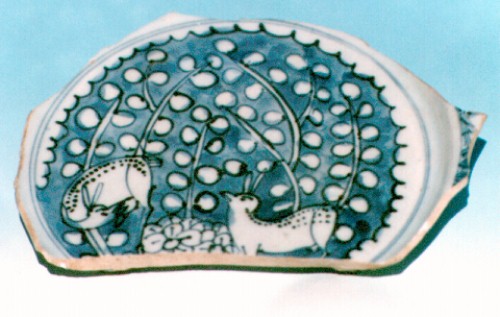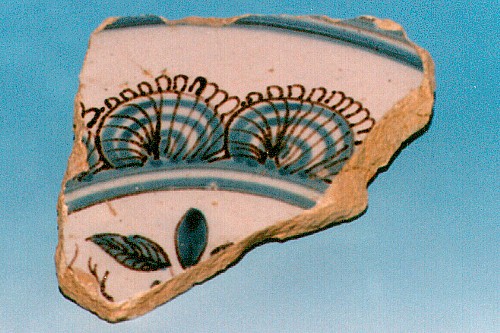|
| Two Decorated Plate Fragments in Porcelain and Faience, from the Convent of Jesus at Setúbal: 16th century |


Invented by the Chinese about 1300 BC, porcelain is a paste of Chinese clay, stone and quartz, fired at high temperatures to result in a translucent, white vitrified fabric. Vasco da Gama’s voyage to India increased the import of Chinese porcelain, quite rare until then, to the west. The Portuguese had settled in Macao in 1509, and began exporting porcelain in great quantities to Portugal and western Europe.
The plate with deer is of porcelain decorated with cobalt oxide.
The Faience plate with leaves is a European imitation of oriental porcelain, made in earthenware and decorated with cobalt oxide and manganese.
Both sorts of plates were in daily use in the Convent of Jesus in the 16th century.
© 1998 Oxfordshire Museum Service, Setúbal Museums and the Benaki Museum